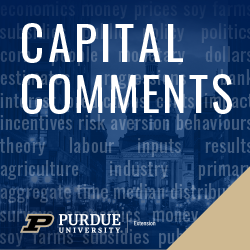Capital Comments: It's Tax Season. Where Do Your Local Taxes Go?
T
ax season is coming up. This year, federal income taxes are due on May 17th. Indiana’s state and local income taxes are due on April 15th. The first installment of the property tax is due on May 10. You pay your motor vehicle excise tax with your vehicle registration each year. The due dates are based alphabetically; my last name gives me an April 7 due date. And, of course, sales taxes and motor fuel taxes know no season. You pay those when you shop or fill your tank, all year long.
The debates about federal spending and the state budget are in the news, so we have some idea of where those taxes go. But what about local governments? Property taxes, income taxes, sales taxes, motor fuel taxes and vehicle excise taxes all fund local government, too. Here’s how.
Property taxes are levied on land, buildings and business equipment. After credits are subtracted, the tax raised $6.8 billion in 2020, for counties, townships, cities and towns, schools, and libraries, plus special districts, like those for fire protection or transportation. School districts get the biggest share of property taxes, more than $3 billion of the total. Counties, cities and towns get most of the rest.
All Indiana counties now have local income taxes. They’re collected by the Indiana Department of Revenue with state income taxes, then distributed back to counties based on how much county residents paid. Those dollars are divvied up among the local governments in each county, using several formulas, mostly based on property tax levies. The state distributed $2.8 billion in 2020, with counties, cities and towns getting the biggest share. School districts get just a little.
Indiana taxes motor vehicles. The property tax that applies to your house used to apply to your car, too. A constitutional amendment 50 years ago allowed the legislature to replace those property taxes with the motor vehicle excise tax on cars, light trucks and motorcycles. That’s why the revenue is distributed to all local governments and used for general purposes, not just for roads. The state takes a share, too. Local governments received almost $600 million from vehicle excise taxes in 2019.
Taxes on motor fuel pay for road construction and maintenance. The state collects taxes on sales of gasoline and other fuels, and fees on electric vehicles. The state Department of Transportation gets a bit more than 60 percent of the total, and the rest is distributed to county, city and town highway and street departments to maintain local roads. The distribution formula is complicated—way complicated—but it’s based on road miles, vehicle registrations and population. That way counties without many gas stations still get money to keep their roads in shape. Local governments got about $600 million in state highway aid in 2020.
The biggest slice of the local revenue pie—slightly bigger than property taxes—is state school aid. More than 40% of the state’s general fund budget is dedicated to revenue for local school districts. Again, it’s a complicated formula based on school enrollment and several demographic factors. State sales and income taxes raise more than 80 percent of the money for the state’s general fund. So about one-third of sales and income taxes you pay go to local schools. State school aid was $6.9 billion in fiscal year 2020.
All those sources add up to 85% of local revenues. The rest comes from charges, fees, licenses and fines, and from a large number of miscellaneous sources, such as restaurant and hotel taxes, beverage tax distributions, interest earnings, sale of property, and lots more. Charges, fines and fees accounted for $1.4 billion in 2020, and everything else summed to about $1.6 billion.
All told, it costs about $21 billion to run local government in Indiana. School districts take up 55 percent of that amount—kids are expensive! Cities and towns account for 18 percent, and counties 14 percent. The remaining 13 percent are townships, library districts and special districts.
I’d rather not pay taxes. You’d rather not pay taxes. But schools, roads, police officers, firefighters, parks and libraries do come in handy, and taxes are their price.

